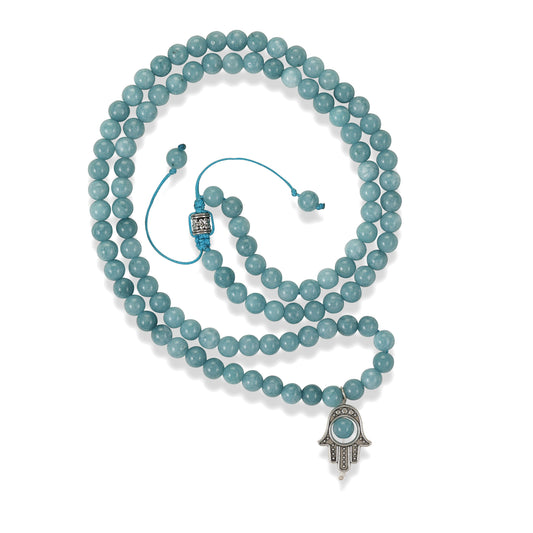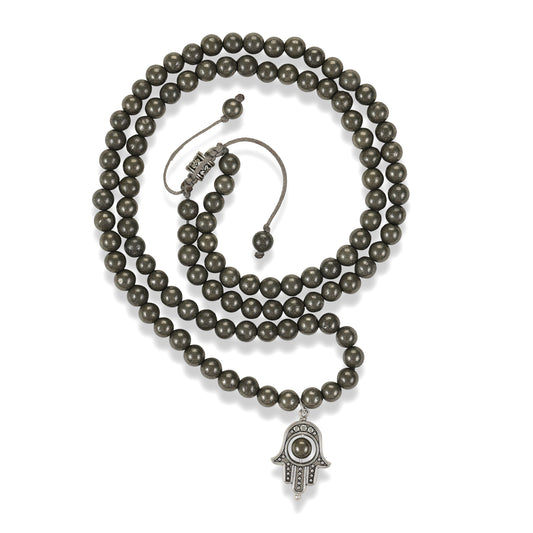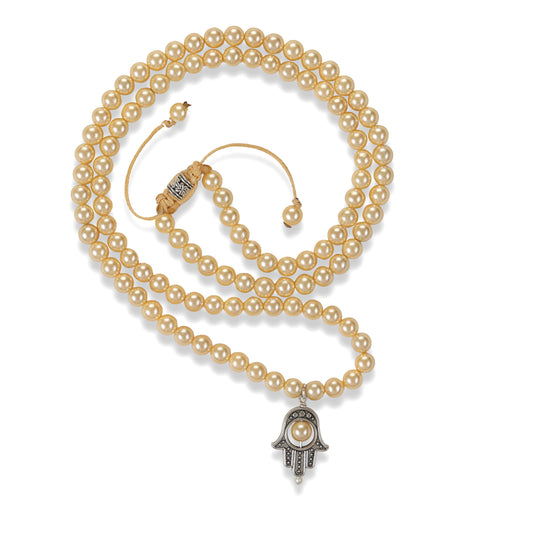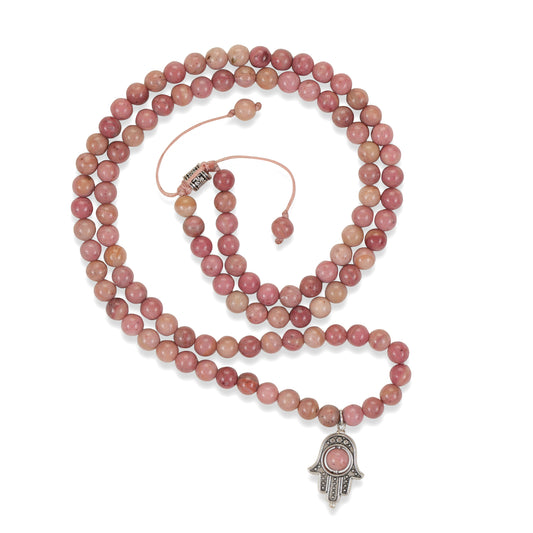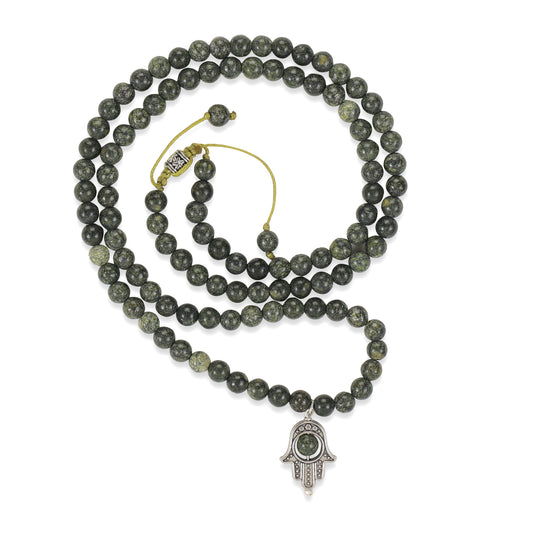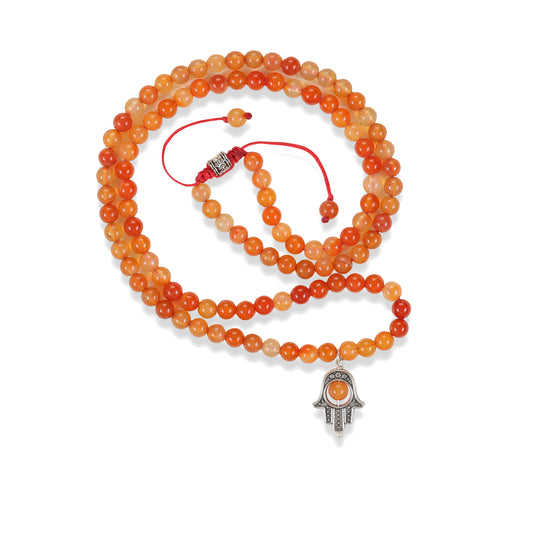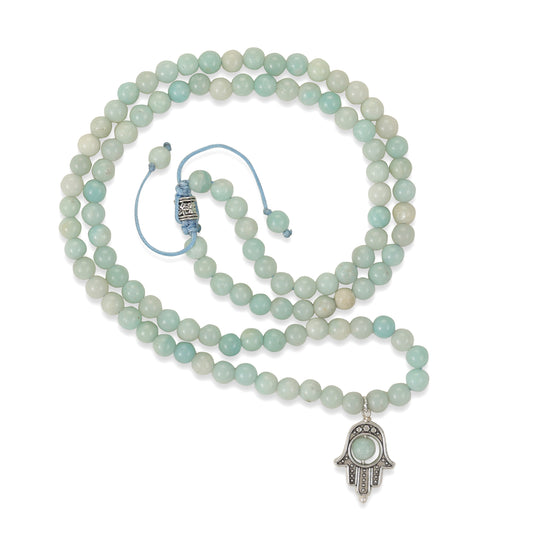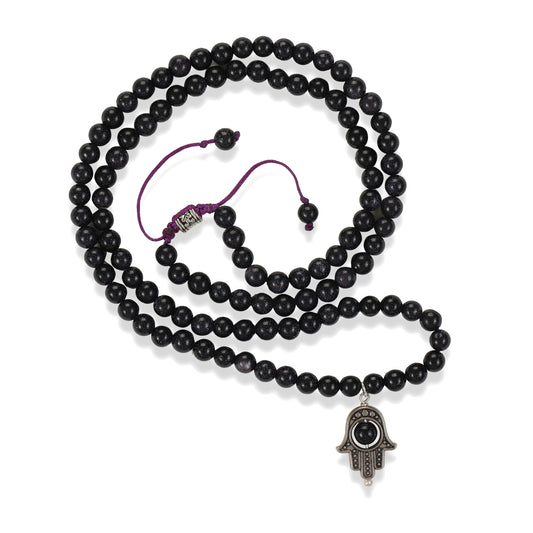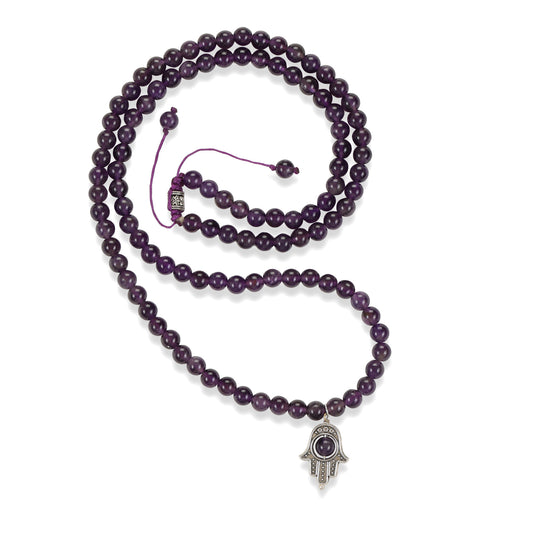Get your Japa Mala 108 Beads online from Ratnakripa. Check out our variety, including Tulsi, Crystals, Rudraksha 108 beads and many more. Claim discounts when you shop now.
What Is Crystal Mala?
Crystal Mala also known as prayer beads, commonly referred to as simply "Mala" is like a string of special beads used in different spiritual practices like Hinduism, Buddhism, Jainism, and Sikhism. When people meditate, they repeat a special word or phrase called a mantra, and that's what "japa" means.
Usually, a regular Japa Mala has 108 beads, but some have 27 or 54 beads. 108 is a pretty important number in these traditions. Each bead helps count how many times they say their mantra, so they can stay focused.
Why does Crystal Mala have 108 Beads?
There is a many reasons why there are 108 beads in a Mala and this number is very important in Hindu beliefs. For example, there are four parts to each of the twenty seven lunar asterisms which adds up to 108. These parts are shown by the 108 beads in the Mala. This reminds people that Vedic teachings should reach all these 108 places.
The beads also represent the 108 points in our body that we use to sense things. On average a person breathes 21,600 times a day. If someone spends half of their breaths on regular activities, they should use the rest, around 10,800 breaths, for spiritual practice. That's why its suggested to chant a Mala, which has 108 beads, at least 100 times every day.
In Hinduism, there are 108 Upanishads and the names of Vishnu and Shiva in the Mahabharata are mentioned 108 times. Even in Ayurveda which is an ancient medical system, there are 108 major mental illnesses.
How to Choose The Right Crystal Mala?
When you are choosing mala beads, remember they each have their own special qualities. Some can help you meditate better and feel more connected spiritually. Others might bring you comfort and inspire you. Trusting your instincts and knowing what you want can help you find the perfect mala beads for you.
Different Types of Mala
Rudraksha Mala: This is the most popular type of mala used universally by spiritual seekers. It is ideal for meditation.
Tulsi Mala: Tulsi Mala keeps the person's mind calm and stable. It purifies the person's body externally and internally.
Crystal Mala: We have wide range of crystal mala collection. Like Green Aventurine 108 Beads Mala, Howlite, Lapis Lazuli, Garnet, Lava, Green Tree Agate, Fresh water Pearl, Irani Firoza, Green Onyx, Pyrite, Amethyst Mala and many more.
How to practice Japa with a Crystal mala?
Choose a Mantra: Pick a word or phrase that means a lot to you. This can come from your faith, a positive saying, or a divine name. Simple mantras like "OM" or "SO HUM" (I am that) work well.
Sit Comfortably: Find a quiet spot where you can sit without being bothered. Use a cushion, chair, or sit on the floor. Keep your back straight but relaxed.
Hold the Mala: Hold the Japa Mala in your right hand. Let the beads rest on your middle finger, with the beads hanging between your thumb and ring finger.
Start at the Guru Bead: Begin by holding the first bead next to the bigger guru bead with your thumb and middle finger.
Recite the Mantra: As you hold each bead, softly say your chosen mantra, either in your mind or out loud. Move to the next bead by rolling it over your middle finger with your thumb. Do this for each bead.
Stay Focused: Keep your mind on the mantra and the feeling of the beads. If your mind starts to wander, gently bring it back to the mantra.
Complete the Cycle: When you reach the guru bead again after 108 repetitions, you can stop or continue. If you want to keep going, turn the Mala around and go back the other way without crossing the guru bead.
Finish Your Practice: When you’re done, take a moment to feel grateful or think about your practice. You can also say a final prayer or set a positive intention.
Usually, a person starts with loud Japa because the mind needs to hear the sound to focus. With regular practice, they move on to quieter Upanshu Japa, and eventually to silent Manasika Japa. Over time, your mind gets so used to the practice that the sound of the mantra will come to you automatically when you hold your mala and start.

